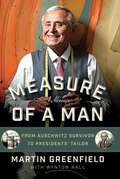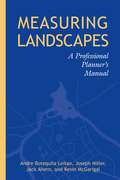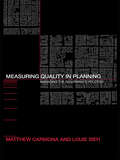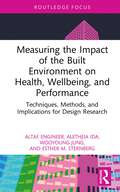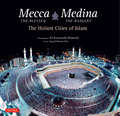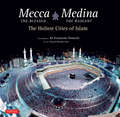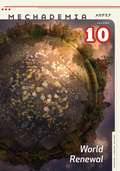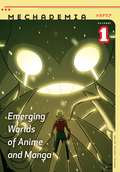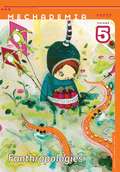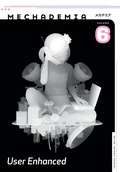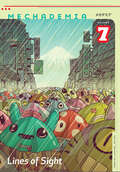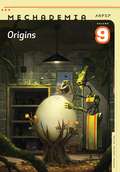- Table View
- List View
Measure of a Man: From Auschwitz Survivor to Presidents' Tailor
by Wynton Hall Martin GreenfieldHe's been called "America's greatest living tailor" and "the most interesting man in the world." Now, for the first time, Holocaust survivor Martin Greenfield tells his incredible life story. Taken from his Czechoslovakian home at age fifteen and transported to the Nazi concentration camp at Auschwitz with his family, Greenfield came face to face with "Angel of Death" Dr. Joseph Mengele and was divided forever from his parents, sisters, and baby brother.In haunting, powerful prose, Greenfield remembers his desperation and fear as a teenager alone in the death camp-and how an SS soldier's shirt dramatically altered the course of his life. He learned how to sew; and when he began wearing the shirt under his prisoner uniform, he learned that clothes possess great power and could even help save his life.Measure of a Man is the story of a man who suffered unimaginable horror and emerged with a dream of success. From sweeping floors at a New York clothing factory to founding America's premier custom suit company, Greenfield built a fashion empire. Now 86 years old and working with his sons, Greenfield has dressed the famous and powerful of D.C. and Hollywood, including Presidents Dwight Eisenhower, Bill Clinton, and Barack Obama, celebrities Paul Newman, Leonardo DiCaprio, and Jimmy Fallon, and the stars of Martin Scorsese's films.Written with soul-baring honesty and, at times, a wry sense of humor, Measure of a Man is a memoir unlike any other-one that will inspire hope and renew faith in the resilience of man.
Measured Words: Computation and Writing in Renaissance Italy
by Arielle SaiberMeasured Words investigates the rich commerce between computation and writing that proliferated in fifteenth- and sixteenth-century Italy. Arielle Saiber explores the relationship between number, shape, and the written word in the works of four exceptional thinkers: Leon Battista Alberti’s treatis on cryptography, Luca Pacioli’s ideal proportions for designing Roman capital letters, Niccolò Tartaglia’s poem embedding his solution to solving cubic equations, and Giambattista Della Porta’s curious study on the elements of geometric curves. Although they came from different social classes and practiced the mathematical and literary arts at differing levels of sophistication, they were all guided by a sense that there exist deep ontological and epistemological bonds between computational and verbal thinking and production. Their shared view that a network or continuity exists between the arts yielded extraordinary results. Through measuring their words, literally and figuratively, they are models of what the very best interdisciplinary work can offer us.
Measuring Impact
by Sandra GattenhofThis book investigates the relationship developed between the researcher/evaluator and the commissioning arts and cultural producer in providing an opportunity to rethink the traditional process of reporting back on value and impact through the singular entity of funds acquittal. Using three commissioned evaluations as examples, the discussion outlines the two positions most often adopted by researchers/evaluators, external and distanced or embedded and collaborative, and will argue the merits and deficiencies of the two approaches. This text also investigates the role of the researcher/evaluator as a broker of stakeholder interests; how cultural organizations can partner in data gathering and develop a participatory approach to the research; what role the researcher/evaluator can have in the dissemination of evaluation findings and recommendations; and makes recommendations on which partnership type is more affective in a commissioned evaluation model for an arts and culture organization in the Australian landscape.
Measuring Landscapes: A Planner's Handbook
by Jack Ahern Joseph Miller Kevin Mcgarigal Andre Botequilha LeitaoThis practical handbook bridges the gap between those scientists who study landscapes and the planners and conservationists who must then decide how best to preserve and build environmentally-sound habitats. Until now, only a small portion of the relevant science has influenced the decision-making arenas where the future of our landscapes is debated and decided. The authors explain specific tools and concepts to measure a landscape's structure, form, and change over time. Metrics studied include patch richness, class area proportion, patch number and density, mean patch size, shape, radius of gyration, contagion, edge contrast, nearest neighbor distance, and proximity. These measures will help planners and conservationists make better land use decisions for the future.
Measuring Quality in Planning: Managing the Performance Process
by Matthew Carmona Louie SiehThis book deals with one of the current major debates in planning: how to measure the quality and effectiveness of the output of the planning process. It deals with issues of defining quality, public sector management, the use of indicators and the planning process. Although case study material is drawn from UK practice this topic is universal and the authors include discussions of international practice and experience.
Measuring Shape
by John C. Russ F. Brent Neal"John Russ is the master of explaining how image processing gets applied to real-world situations. With Brent Neal, he’s done it again in Measuring Shape, this time explaining an expanded toolbox of techniques that includes useful, state-of-the-art methods that can be applied to the broad problem of understanding, characterizing, and measuring shape. He has a gift for finding the kernel of a particular algorithm, explaining it in simple terms, then giving concrete examples that are easily understood. His perspective comes from solving real-world problems and separating out what works in practice from what is just an abstract curiosity." —Tom Malzbender, Hewlett-Packard Laboratories, Palo Alto, California, USA Useful for those working in fields including industrial quality control, research, and security applications, Measuring Shape is a handbook for the practical application of shape measurement. Covering a wide range of shape measurements likely to be encountered in the literature and in software packages, this book presents an intentionally diverse set of examples that illustrate and enable readers to compare methods used for measurement and quantitative description of 2D and 3D shapes. It stands apart through its focus on examples and applications, which help readers quickly grasp the usefulness of presented techniques without having to approach them through the underlying mathematics. An elusive concept, shape is a principal governing factor in determining the behavior of objects and structures. Essential to recognizing and classifying objects, it is the central link in manmade and natural processes. Shape dictates everything from the stiffness of a construction beam, to the ability of a leaf to catch water, to the marketing and packaging of consumer products. This book emphasizes techniques that are quantitative and produce a meaningful yet compact set of numerical values that can be used for statistical analysis, comparison, correlation, classification, and identification. Written by two renowned authors from both industry and academia, this resource explains why users should select a particular method, rather than simply discussing how to use it. Showcasing each process in a clear, accessible, and well-organized way, they explore why a particular one might be appropriate in a given situation, yet a poor choice in another. Providing extensive examples, plus full mathematical descriptions of the various measurements involved, they detail the advantages and limitations of each method and explain the ways they can be implemented to discover important correlations between shape and object history or behavior. This uncommon assembly of information also includes sets of data on real-world objects that are used to compare the performance and utility of the various presented approaches.
Measuring Urban Design
by James W. Quinn Reid Ewing Otto Clemente Kathryn M. Neckerman Marnie Purciel-Hill Andrew RundleWhat makes strolling down a particular street enjoyable? The authors of Measuring Urban Design argue it's not an idle question. Inviting streets are the centerpiece of thriving, sustainable communities, but it can be difficult to pinpoint the precise design elements that make an area appealing. This accessible guide removes the mystery, providing clear methods to measure urban design. In recent years, many "walking audit instruments" have been developed to measure qualities like building height, block length, and sidewalk width. But while easily quantifiable, these physical features do not fully capture the experience of walking down a street. In contrast, this book addresses broad perceptions of street environments. It provides operational definitions and measurement protocols of five intangible qualities of urban design, specifically imageability, visual enclosure, human scale, transparency, and complexity. The result is a reliable field survey instrument grounded in constructs from architecture, urban design, and planning. Readers will also find a case study applying the instrument to 588 streets in New York City, which shows that it can be used effectively to measure the built environment's impact on social, psychological, and physical well-being. Finally, readers will find illustrated, step-by-step instructions to use the instrument and a scoring sheet for easy calculation of urban design quality scores. For the first time, researchers, designers, planners, and lay people have an empirically tested tool to measure those elusive qualities that make us want to take a stroll. Urban policymakers and planners as well as students in urban policy, design, and environmental health willfind thetools and methods in Measuring Urban Design especially useful.
Measuring the Impact of the Built Environment on Health, Wellbeing, and Performance: Techniques, Methods, and Implications for Design Research (Health and the Built Environment)
by Esther M. Sternberg Altaf Engineer Aletheia Ida Wooyoung JungThis book reveals how subjective and objective data gathered by innovative methods of measurement give us the ability to quantify stress, health, performance, and wellbeing outcomes in different built environments. Design interventions informed by these measures, along with innovative integrated building materials, can shape the character of built environments for better health, productivity, and performance. These measures can help employers and managers calculate the return on investment (ROI) of various design interventions.Areas of inquiry in health and the built environment are discussed in three parts: Part 1 – Fundamentals: Human, Environment, and Material Measures for Health and Wellbeing; Part 2 – Methods: Measurement Techniques, Tools, and Methods for Health and Wellbeing; and Part 3 – Applications: Case Studies and Future Directions. The rapid pace of technical innovation and entrepreneurship by interdisciplinary research teams in health and the built environment has created a need for more publications such as this book, which discuss latest tools and methods of measuring the effects of the built environment on human physiology and psychology. Emerging tools and techniques are introduced for this field of built environment design, including virtual reality immersive environments and fisheye lens photograph simulations for human wellbeing impact measures integral to the design process. The potentials and limitations of bio‑responsive material systems and integrated sensing devices with wearable technologies linked to the Internet of Things are discussed in relation to human wellbeing performance improvements.The book provides both the foundational knowledge and fundamentals for characterizing human health and wellbeing in the built environment as well as emerging trends and design research methods for innovations in this field. It will be of interest to researchers, educators, and students of architecture, interior design, and integrative medicine, as well as professionals working in health and the built environment.
Meat Market
by Juno DawsonWINNER OF THE YA BOOK PRIZE 2020Jana Novak's history sounds like a classic model cliché: tall and gangly, she's uncomfortable with her androgynous looks until she's unexpectedly scouted and catapulted to superstardom...But the fashion industry is as grimy as it is glamorous. And there are unexpected predators at every turn. Jana is an ordinary girl from a south London estate, lifted to unimaginable heights. But the further you rise, the more devastating your fall ... Honest and raw, this is a timely exposé of the dark underbelly of the fashion industry in an era of #TimesUp and #MeToo. It might just be Juno Dawson's most important book yet.'Juno Dawson slashes through the glamour of the fashion industry ... combining blockbuster appeal with piercing commentary on modelling, body image and consent' Observer'Guaranteed to be your summer read' Glamour
Meat Market: The London Collection
by Juno DawsonFall into the lives of the city's filthy rich with Juno Dawson's deliciously dark and intoxicating London Collection. <p><p>Jana Novak's history sounds like a classic model cliché: tall and gangly, she's uncomfortable with her androgynous looks until she's unexpectedly scouted and catapulted to superstardom. But the fashion industry is as grimy as it is glamorous. And there are unexpected predators at every turn. <p><p>Jana is an ordinary girl from a south London estate, lifted to unimaginable heights. But the further you rise, the more devastating your fall ... <p><p>Honest and raw, this is a timely exposé of the dark underbelly of the fashion industry in an era of #TimesUp and #MeToo. It might just be Juno Dawson's most important book yet.
Mecca the Blessed, Medina the Radiant
by Seyyed Hossein Nasr Ali Kazuyoshi NomachiDuring the season of Ramadan, when the first revelation of the Qur'an is commemorated, more than a million visitors journey to Mecca's Great Mosque. Despite Islam's position as a powerful religion, boasting one quarter of the world's population as its followers, many aspects of Muslim thought and belief remain an enigma to non-Muslims--until now.While the cities of Mecca and Medina are restricted to Muslims, and photographing the sites requires special--and rarely given--permission from the Saudi Arabian authorities, Mecca the Blessed, Medina the Radiant is an unprecedented exploration of Islam's most holy cities and the great pilgrimage, mostly presented in full-color, never-before-seen photographs. A remarkable achievement, Japanese photographer Ali Kazuyoshi Namachi garnered the full support of the Saudi Arabian authorities to capture over 140 stunning and dynamic images, providing an opening to the mystical places and scenes of Islam. From breathtaking aerial photographs of the Arabian terrain, to vistas of teeming crowds of worshippers surrounding the Kacbah, Mecca's sacred center and the fulcrum toward which they face in prayer five times daily, to intense portraits of faithful Muslims in prayer, to the magnificent architecture reflecting the faith of the believers, this book allows both Muslims and those unfamiliar with the Islamic faith complete access to the holiest sites of one of the world's major religions. A selection of archival illustrations are also included to supplement the photographs.Also featured is an essay about the spiritual and historical signficance of both Mecca and Medina as well as a discussion of the meaning and symbolic content of the hajj--the Muslim annual pilgrimage to Mecca--by Seyyed Hossein Nasr, one of the most highly regarded scholars of Islam.
Mecca the Blessed, Medina the Radiant
by Seyyed Hossein Nasr Ali Kazuyoshi NomachiDuring the season of Ramadan, when the first revelation of the Qur'an is commemorated, more than a million visitors journey to Mecca's Great Mosque. Despite Islam's position as a powerful religion, boasting one quarter of the world's population as its followers, many aspects of Muslim thought and belief remain an enigma to non-Muslims--until now.While the cities of Mecca and Medina are restricted to Muslims, and photographing the sites requires special--and rarely given--permission from the Saudi Arabian authorities, Mecca the Blessed, Medina the Radiant is an unprecedented exploration of Islam's most holy cities and the great pilgrimage, mostly presented in full-color, never-before-seen photographs. A remarkable achievement, Japanese photographer Ali Kazuyoshi Namachi garnered the full support of the Saudi Arabian authorities to capture over 140 stunning and dynamic images, providing an opening to the mystical places and scenes of Islam. From breathtaking aerial photographs of the Arabian terrain, to vistas of teeming crowds of worshippers surrounding the Kacbah, Mecca's sacred center and the fulcrum toward which they face in prayer five times daily, to intense portraits of faithful Muslims in prayer, to the magnificent architecture reflecting the faith of the believers, this book allows both Muslims and those unfamiliar with the Islamic faith complete access to the holiest sites of one of the world's major religions. A selection of archival illustrations are also included to supplement the photographs.Also featured is an essay about the spiritual and historical signficance of both Mecca and Medina as well as a discussion of the meaning and symbolic content of the hajj--the Muslim annual pilgrimage to Mecca--by Seyyed Hossein Nasr, one of the most highly regarded scholars of Islam.
Mecca the Blessed, Medina the Radiant
by Seyyed Hossein Nasr Ali Kazuyoshi NomachiDuring the season of Ramadan, when the first revelation of the Qur'an is commemorated, more than a million visitors journey to Mecca's Great Mosque. Despite Islam's position as a powerful religion, boasting one quarter of the world's population as its followers, many aspects of Muslim thought and belief remain an enigma to non-Muslims--until now.While the cities of Mecca and Medina are restricted to Muslims, and photographing the sites requires special--and rarely given--permission from the Saudi Arabian authorities, Mecca the Blessed, Medina the Radiant is an unprecedented exploration of Islam's most holy cities and the great pilgrimage, mostly presented in full-color, never-before-seen photographs. A remarkable achievement, Japanese photographer Ali Kazuyoshi Namachi garnered the full support of the Saudi Arabian authorities to capture over 140 stunning and dynamic images, providing an opening to the mystical places and scenes of Islam. From breathtaking aerial photographs of the Arabian terrain, to vistas of teeming crowds of worshippers surrounding the Kacbah, Mecca's sacred center and the fulcrum toward which they face in prayer five times daily, to intense portraits of faithful Muslims in prayer, to the magnificent architecture reflecting the faith of the believers, this book allows both Muslims and those unfamiliar with the Islamic faith complete access to the holiest sites of one of the world's major religions. A selection of archival illustrations are also included to supplement the photographs.Also featured is an essay about the spiritual and historical signficance of both Mecca and Medina as well as a discussion of the meaning and symbolic content of the hajj--the Muslim annual pilgrimage to Mecca--by Seyyed Hossein Nasr, one of the most highly regarded scholars of Islam.
Mecca the Blessed, Medina the Radiant
by Seyyed Hossein Nasr Ali Kazuyoshi NomachiDuring the season of Ramadan, when the first revelation of the Qur'an is commemorated, more than a million visitors journey to Mecca's Great Mosque. Despite Islam's position as a powerful religion, boasting one quarter of the world's population as its followers, many aspects of Muslim thought and belief remain an enigma to non-Muslims--until now.While the cities of Mecca and Medina are restricted to Muslims, and photographing the sites requires special--and rarely given--permission from the Saudi Arabian authorities, Mecca the Blessed, Medina the Radiant is an unprecedented exploration of Islam's most holy cities and the great pilgrimage, mostly presented in full-color, never-before-seen photographs. A remarkable achievement, Japanese photographer Ali Kazuyoshi Namachi garnered the full support of the Saudi Arabian authorities to capture over 140 stunning and dynamic images, providing an opening to the mystical places and scenes of Islam. From breathtaking aerial photographs of the Arabian terrain, to vistas of teeming crowds of worshippers surrounding the Kacbah, Mecca's sacred center and the fulcrum toward which they face in prayer five times daily, to intense portraits of faithful Muslims in prayer, to the magnificent architecture reflecting the faith of the believers, this book allows both Muslims and those unfamiliar with the Islamic faith complete access to the holiest sites of one of the world's major religions. A selection of archival illustrations are also included to supplement the photographs.Also featured is an essay about the spiritual and historical signficance of both Mecca and Medina as well as a discussion of the meaning and symbolic content of the hajj--the Muslim annual pilgrimage to Mecca--by Seyyed Hossein Nasr, one of the most highly regarded scholars of Islam.
Meccano
by Roger MarriottThe origin of the name is uncertain but it is now over 100 years since Frank Hornby first used the word Meccano for the toy he invented to amuse his sons. Like the product it described, it is now known all over the world and has entered the dictionary as a term in common usage. Frank Hornby's vision of an educational toy became the basis of perhaps the most successful British Toy manufacturer of the 20th century. Meccano's success, which even surprised its inventor, supported the development of many other high quality products. As well as the famous Hornby trains and Dinky Toys, special purpose motor car and aeroplane construction sets have captivated the imagination of boys since the 1930's. Using a wealth of colour illustrations Roger Marriott tells the story of Meccano, its development into a sophisticated range of parts and outfits embodying correct engineering principles, enabling boys of all ages to build models reflecting the technology of their time.For more than a century Meccano has amused several generations of boys, and a few girls, and encouraged many to become successful engineers. For many of the boys who grew up with Meccano it is still a fascinating way to "build a new toy every day", to create cranes, planes, trains, cars and many others, that really work to the enjoyment of their grandchildren and themselves.
Mechademia 10: World Renewal
by Frenchy LunningMechademia 10 revolves around a maelstrom of events: the devastation of 3/11—the earthquake, tsunami, and nuclear reactor crises—and the ongoing environmental disasters that have recently overtaken Japan. Because anime and manga have long proposed (and illustrated) alternative worlds—some created after catastrophes—it is fitting that this volume should consider this propensity for &“world renewal.&”Individual essays range widely, from a poetic and personal reflection on the ritual of tôrô nagashi (the lighting of floating paper lanterns that has traditionally commemorated souls lost in great public cataclysms, such as war) to a study of the various counterfactual histories written about the historical figure of Toyotomi Hideyoshi, a former peasant farmer who became a military dictator of feudal Japan. The book also includes an original manga, Nanohana, from the popular artist Hagio Moto, who is quoted as saying: &“I want to think together with everyone else about Fukushima and Chernobyl, about the future of the Earth, about the future of humankind, and to keep thinking moving forward.&”
Mechademia 1: Emerging Worlds of Anime and Manga
by Frenchy LunningAfter decades in which American popular culture dominated global media and markets, Japanese popular culture—primarily manga and anime, but also toys, card and video games, and fashion—has exploded into a worldwide phenomenon. From Pokémon and the Power Rangers to Paranoia Agent and Princess Mononoke, Japanese popular culture is consumed by an eager and exponentially increasing audience of youths, teenagers, and adults. Mechademia, a new annual edited by Frenchy Lunning, begins an innovative and fresh conversation among scholars, critics, and fans about the complexity of art forms like Superflat, manga, and anime. The inaugural volume, Mechademia 1 engages the rise of Japanese popular culture through game design, fashion, graphic design, commercial packaging, character creation, and fan culture. Promoting dynamic ways of thinking, along with state-of-the-art graphic design and a wealth of images, this cutting-edge work opens new doors between academia and fandom.The premiere issue features the interactive worlds that anime and manga have created, including the origins of cosplay (the manga and anime costume subculture), Superflat, forgotten images from a founding manga artist, video game interactivity, the nature of anime fandom in America, and the globalization of manga. Contributors: Anne Allison, Duke U; William L. Benzon; Christopher Bolton, Williams College; Vern L. Bullough, California State U, Northridge; Martha Cornog; Patrick Drazen; Marc Hairston; Mari Kotani; Thomas LaMarre; Antonia Levi, Portland State U; Thomas Looser, NYU; Susan Napier, U of Texas, Austin; Michelle Ollie; Timothy Perper; Sara Pocock; Brian Ruh; Takayuki Tatsumi, Keio U, Tokyo; Toshiya Ueno, Wako U, Tokyo; Theresa Winge, U of Northern Iowa; Mark J. P. Wolf, Concordia U; Wendy Siuyi Wong, York U.Frenchy Lunning is professor of liberal arts at the Minneapolis College of Art and Design.
Mechademia 3: Limits of the Human
by Frenchy LunningDramatic advances in genetics, cloning, robotics, and nanotechnology have given rise to both hopes and fears about how technology might transform humanity. As the possibility of a posthuman future becomes increasingly likely, debates about how to interpret or shape this future abound. In Japan, anime and manga artists have for decades been imagining the contours of posthumanity, creating dazzling and sometimes disturbing works of art that envision a variety of human/nonhuman hybrids: biological/mechanical, human/animal, and human/monster. Anime and manga offer a constellation of posthuman prototypes whose hybrid natures require a shift in our perception of what it means to be human.Limits of the Human—the third volume in the Mechademia series—maps the terrain of posthumanity using manga and anime as guides and signposts to understand how to think about humanity&’s new potentialities and limits. Through a wide range of texts—the folklore-inspired monsters that populate Mizuki Shigeru&’s manga; Japan&’s Gothic Lolita subculture; Tezuka Osamu&’s original cyborg hero, Atom, and his manga version of Fritz Lang&’s Metropolis (along with Ôtomo Katsuhiro&’s 2001 anime film adaptation); the robot anime, Gundam; and the notion of the uncanny in Ghost in the Shell 2: Innocence, among others—the essays in this volume reject simple human/nonhuman dichotomies and instead encourage a provocative rethinking of the definitions of humanity along entirely unexpected frontiers. Contributors: William L. Benzon, Lawrence Bird, Christopher Bolton, Steven T. Brown, Joshua Paul Dale, Michael Dylan Foster, Crispin Freeman, Marc Hairston, Paul Jackson, Thomas LaMarre, Antonia Levi, Margherita Long, Laura Miller, Hajime Nakatani, Susan Napier, Natsume Fusanosuke, Sharalyn Orbaugh, Ôtsuka Eiji, Adèle-Elise Prévost and MUSEbasement; Teri Silvio, Takayuki Tatsumi, Mark C. Taylor, Theresa Winge, Cary Wolfe, Wendy Siuyi Wong, and Yomota Inuhiko.
Mechademia 5: Fanthropologies (Mechademia #5)
by Frenchy LunningPassionate fans of anime and manga, known in Japan as otaku and active around the world, play a significant role in the creation and interpretation of this pervasive popular culture. Routinely appropriating and remixing favorite characters, narratives, imagery, and settings, otaku take control of the anime characters they consume. Fanthropologies—the fifth volume in the Mechademia series, an annual forum devoted to Japanese anime and manga—focuses on fans, fan activities, and the otaku phenomenon. The zones of activity discussed in these essays range from fan-subs (fan-subtitled versions of anime and manga) and copyright issues to gender and nationality in fandom, dolls, and other forms of consumption that fandom offers. Individual pieces include a remarkable photo essay on the emerging art of cosplay photography; an original manga about an obsessive doll-fan; and a tour of Akihabara, Tokyo's discount electronics shopping district, by a scholar disguised as a fuzzy animal.Contributors: Madeline Ashby; Jodie Beck, McGill U; Christopher Bolton, Williams College; Naitō Chizuko, Otsuma U; Ian Condry, Massachusetts Institute of Technology; Martha Cornog; Kathryn Dunlap, U of Central Florida; Ōtsuka Eiji, Kobe Design U; Gerald Figal, Vanderbilt U; Patrick W. Galbraith, U of Tokyo; Marc Hairston, U of Texas at Dallas; Marilyn Ivy, Columbia U; Koichi Iwabuchi, Waseda U; Paul Jackson; Amamiya Karin; Fan-Yi Lam; Thomas Lamarre, McGill U; Paul M. Malone, U of Waterloo; Anne McKnight, U of Southern California; Livia Monnet, U of Montreal; Susan Napier, Tufts U; Kerin Ogg; Timothy Perper; Eron Rauch; Brian Ruh, Indiana U; Nathan Shockey, Columbia U; Marc Steinberg, Concordia U; Jin C. Tomshine, U of California, San Francisco; Carissa Wolf, North Dakota State U.
Mechademia 6: User Enhanced
by Thomas Lamarre Brian Bergstrom Christine L. MarranManga and anime inspire a wide range of creative activities for fans: blogging and contributing to databases, making elaborate cosplay costumes, producing dôjinshi (amateur) manga and scanlations, and engaging in fansubbing and DIY animation. Indeed, fans can no longer be considered passive consumers of popular culture easily duped by corporations and their industrial-capitalist ideologies. They are now more accurately described as users, in whose hands cultural commodities can provide instant gratification but also need to be understood as creative spaces that can be inhabited, modified, and enhanced.User Enhanced, the sixth volume of the Mechademia series, examines the implications of this transformation from consumer to creator. Why do manga characters lend themselves so readily to user enhancement? What are the limitations on fan creativity? Are fans simply adding value to corporate properties with their enhancements? And can the productivity and creativity of user activities be transformed into genuine cultural enrichment and social engagement? Through explorations of the vitality of manga characters, the formal and structural open-endedness of manga, the role of sexuality and desire in manga and anime fandom, the evolution of the Lolita fashion subculture, the contemporary social critique embodied in manga like Helpman! and Ikigami, and gamer behavior within computer games, User Enhanced suggests that commodity enhancement may lead as easily to disengagement and isolation as to interaction, connection, and empowerment.Contributors: Brian Bergstrom; Lisa Blauersouth; Aden Evens, Dartmouth College; Andrea Horbinski; Itô Gô, Tokyo Polytechnic U; Paul Jackson; Yuka Kanno; Shion Kono, Sophia U, Tokyo; Thomas Lamarre, McGill U; Christine L. Marran, U of Minnesota; Miyadai Shinji, Tokyo Metropolitan U; Miyamoto Hirohito, Meiji U; Livia Monnet, U of Montreal; Miri Nakamura, Wesleyan U; Matthew Penney, Concordia U, Montreal; Emily Raine; Brian Ruh; Kumiko Saito, Bowling Green State U; Rio Saitô, College of Visual Arts, St. Paul; Cathy Sell; James Welker, U of British Columbia; Yoshikuni Igarashi, Vanderbilt U.
Mechademia 7: Lines of Sight
by Thomas Lamarre Marc Steinberg Fujimoto YukariLines of Sight—the seventh volume in the Mechademia series, an annual forum devoted to Japanese anime and manga—explores the various ways in which anime, manga, digital media, fan culture, and Japanese art—from scroll paintings to superflat—challenge, undermine, or disregard the concept of Cartesian (or one-point) perspective, the dominant mode of visual culture in the West since the seventeenth century. More than just a visual mode or geometric system, Cartesianism has shaped nearly every aspect of modern rational thought, from mathematics and science to philosophy and history.Framed by Thomas Lamarre&’s introduction, &“Radical Perspectivalism,&” the essays here approach Japanese popular culture as a visual mode that employs non-Cartesian formations, which by extension make possible new configurations of perception and knowledge. Whether by shattering the illusion of visual or narrative seamlessness through the use of multiple layers or irregular layouts, blurring the divide between viewer and creator, providing diverse perspectives within a single work of art, or rejecting dualism, causality, and other hallmarks of Cartesianism, anime and manga offer in their radicalization of perspective the potential for aesthetic and even political transformation.Contributors: David Beynon, Deakin U; Fujimoto Yukari, Meiji U; Yuriko Furuhata, McGill U; Craig Jackson, Ohio Wesleyan U; Reginald Jackson, U of Chicago; Thomas Lamarre, McGill U; Jinying Li; Waiyee Loh; Livia Monnet, U of Montreal; Sharalyn Orbaugh, U of British Columbia; Stefan Riekeles; Atsuko Sakaki, U of Toronto; Miryam Sas, U of California, Berkeley; Timon Screech, U of London; Emily Somers; Marc Steinberg, Concordia U.
Mechademia 8: Tezuka’s Manga Life (Mechademia)
by Frenchy LunningKnown as the &“Walt Disney of Japan&” it is no surprise that Tezuka Osamu is still the best-known manga creator to Western fans. Current scholarship has uncovered the profound complexity and ambiguity not only of his work but of the man, the artist, and his life—dismantling his position as the god of manga.Contributors to this volume of Mechademia—a series devoted to creative and critical work on anime, manga, and the fan arts—analyze Tezuka and his complicated approaches toward life and nonlife on earth, as well as his effect on the lives of other manga artists. Using essays and reprints of Japanese manga on Tezuka, this book questions his influence and attitudes toward the nonhuman, evolutionary theory, the aesthetic lineage of contemporary manga, incipient feminism in the reinscription of the nonhuman feminine, the sexual politics of manga bodies, the origins of the moe culture, and the styles of didacticism revealing the digressions of insects and classical modes, among others.The authors offer varying perspectives on the historical transformations in production, distribution, and reception that gradually integrated and differentiated an overlapping series of markets and readerships in the postwar era. Divided into four sections that explore different &“lives&”—&“Nonhuman Life,&” &“Media Life,&” &“A Life in Manga,&” and &“Everyday Life&”—Mechademia 8 serves as a prehistory of the impersonal politics of the present while tracing Tezuka&’s legacy. Contributors: Akatsuka Fujio; Anno Moyoko; Linda H. Chance, U of Pennsylvania; Jonathan Clements; Hideaki Fujiki, Nagoya U; Patrick W. Galbraith; Verina Gfader, U of Huddersfield; Alicia Gibson; G. Clinton Godart, USC; Yorimitsu Hashimoto, Osaka U; Ryan Holmberg; Hikari Hori, Columbia U; Mary A. Knighton, College of William and Mary; Thomas Lamarre, McGill U; Christine L. Marran, U of Minnesota; Natsume Fusanosuke, Gakushuin U, Tokyo; Ōtsuka Eiji, Kobe Design U; Baryon Tensor Posadas; Renato Rivera Rusca, Meiji U; Frederik L. Schodt; Marc Steinberg, Concordia U; Tezuka Osamu; Toshiya Ueno, Wako U, Tokyo; Matthew Young.
Mechademia 9: Origins (Mechademia #9)
by Frenchy LunningIf the source of manga and anime is physically located in Japan, the temptation for many critics and scholars is to ask what aspects of Japanese culture and history gave rise to these media. This ninth volume of Mechademia—an annual collection of critical work on anime and manga—challenges the tendency to answer the question of origins by reductively generalizing and essentializing &“Japaneseness.&” The essays brought together in Mechademia 9 lead us to understand the extent to which &“Japan&” might be seen as an idea generated by anime, manga, and other texts rather than the other way around. What is it that manga and anime produce that no other medium can precisely duplicate? Is anime its own medium or a genre of animation—or something in between? And how must we adapt existing critical modes in order to read these new kinds of texts? While the authors begin with similar questions about the roots of Japanese popular culture and media, they invoke a wide range of theoretical work in the search for answers, including feminist criticism, disability studies, poststructuralist textual criticism, postcolonialism, art history, film theory, phenomenology, and more. Richly provocative and insightful, Mechademia 9 both enacts and resists the pursuit of fixed starting points, inspiring further creative investigation of this global artistic phenomenon.Contributors: Stephen R. Anderson; Dale K. Andrews, Tohoku Gakuin U; Andrew Ballús; Jodie Beck; Christopher Bolton, Williams College; Kukhee Choo, Tulane U; Ranya Denison, U of East Anglia; Lucy Fraser; Fujimoto Yukari, Meiji U, Japan; Forrest Greenwood; Imamura Taihei; Seth Jacobowitz, Yale U; Kim Joon Yang; Thomas Lamarre, McGill U; Margherita Long, U of California, Riverside; Matsumoto Nobuyuki, Tokyo National Museum; Laura Miller, U of Missouri–St. Louis; Alexandra Roedder; Paul Roquet, Stanford U; Brian Ruh; Shun&’ya Yoshimi, U of Tokyo; Alba G. Torrents.
Mechaforce: Draw Futuristic Robots That Fly, Fight, Battle And Brawl
by E J SuDraw Futuristic Robots that Fly, Fight, Battle and BrawlWhen it comes to drawing robots, beauty is more than skin deep - try armor deep. Slick surfaces and fancy mechanics aren't enough ... success depends on what makes your robot tick and MechaForce gears your imagination into overdrive!33 step-by-step demonstrations show you how to render original, memorable robots, and bring them to life on the page. Learn how to:Draw believable humanoid robots by using tubes, pipes, nuts, bolts, hydraulics and other machinery in place of muscles and bones.Model robots after horses, spiders, dragons and other creatures.Give your robots personality, from sleek and athletic to thin, comical or feminine.Evoke an in-your-face sense of drama and action with extreme perspectives and different poses.Achieve the realistic look of reflective surfaces and other robotic textures.Compose dynamic scenes and establish moods with lighting.Don't short-circuit your robo-creations. From the basics of drawing to dynamic battle scenes, MechaForce will help you create devastating robots with a no-holds-barred attitude!
Mechanical Appliances, Mechanical Movements and Novelties of Construction
by Gardner D. HiscoxFrom the devices that power ships and trains to the workings of clocks, typewriters, and guns, this engrossing visual narrative profiles the specific and unique properties of hundreds of mechanical devices. Nearly 1,000 detailed illustrations depict steam-powered appliances, spring-powered devices, hydraulic equipment, and other machines, many of which remain in common use today. Each apparatus features a detailed line drawing and an informative explanation of its workings and uses. A final chapter chronicles 400 years of impassioned but futile searching for a perpetual motion machine.The companion to Dover's 1800 Mechanical Movements, Devices and Appliances, this volume features fewer but more complex machines than its predecessor. Today's readers--especially engineers, inventors, and other mechanically inclined individuals--will find endless fascination and inspiration among the novelty and variety of these ingenious mechanical designs.
